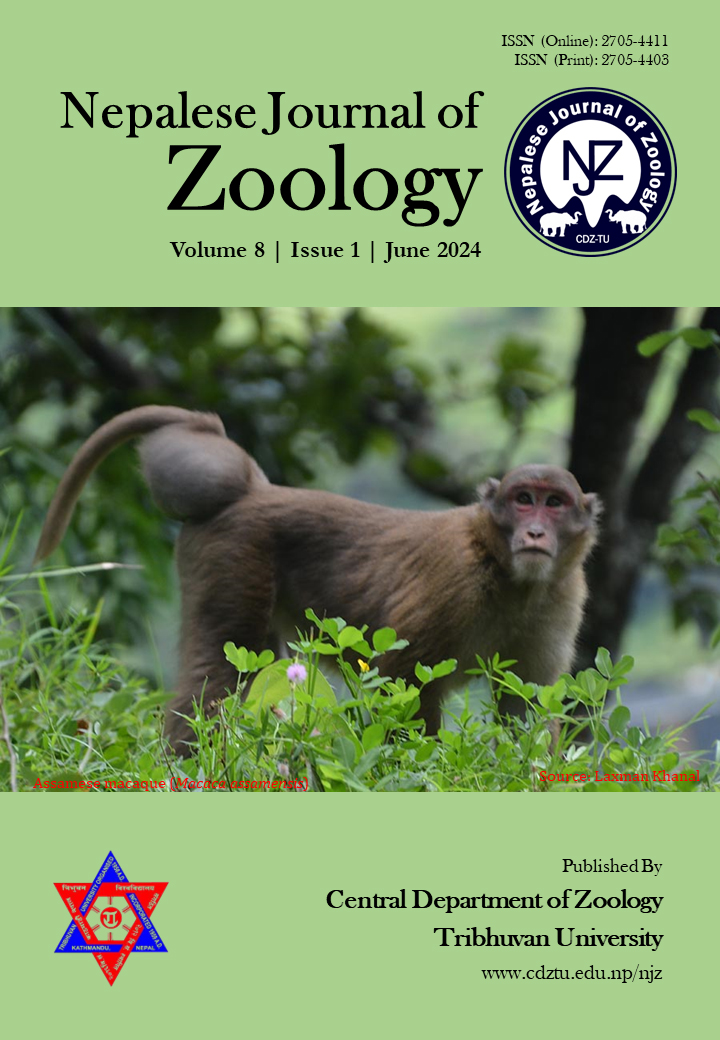Estimation of human height using ulnar length in the Muslim community of Golbazar Municipality, Siraha, Nepal
DOI:
https://doi.org/10.3126/njz.v8i1.67106Keywords:
Anthropometry, Correlation, Height estimation, Regression equation, Ulna lengthAbstract
Calculating an individual's height based on bone measurements is critical in identifying unknown bodies, body parts, or skeletal remains. Anthropologists, anatomists, and forensic experts have used a variety of anthropometric approaches to forecast stature from skeletal remains. Although few studies have been conducted to understand ulnar length and height, it has not been conducted in a few ethnic communities of Nepal. This study aimed to analyze the relationship between human height and ulnar length in Muslim communities of Golbazar Municipality, Siraha, Nepal. Two hundred people (male 100 and female 100) aged 20 to 40 years were purposively selected from Golbazaar, Siraha, Nepal. Ulnar length was measured as the distance between the tip of the Olecranon process and the styloid process with the elbow fully flexed. Height was measured from the top of the head to the floor while the participants stood upright in the anatomical position with their heads in the Frankfort plane. Statistical techniques, such as linear regression analysis and correlation coefficients, were used to determine a correlation between ulna length and height. The population's mean ulna length was 26.53 cm (SD = 2.06), and the mean height was 159.59 cm (SD = 9.72). The correlation between ulna length and height was stronger in males (0.46) than in females (0.36). The study established regression equations for height estimation based on ulna length for different age groups, with the strongest correlations found in the 31–35 years age group and weaker ones in the 20–25 years and 26–30 years age groups. The study suggests that ulna length could be a reliable predictor of height, especially when direct measurement is challenging or impossible. However, additional study is required to explore potential differences based on age, ethnicity, and gender and to validate the findings in more extensive and more diverse populations.
Downloads
Downloads
Published
How to Cite
Issue
Section
License

This work is licensed under a Creative Commons Attribution-NonCommercial 4.0 International License.
This license enables reusers to distribute, remix, adapt, and build upon the material in any medium or format for noncommercial purposes only, and only so long as attribution is given to the creator.

